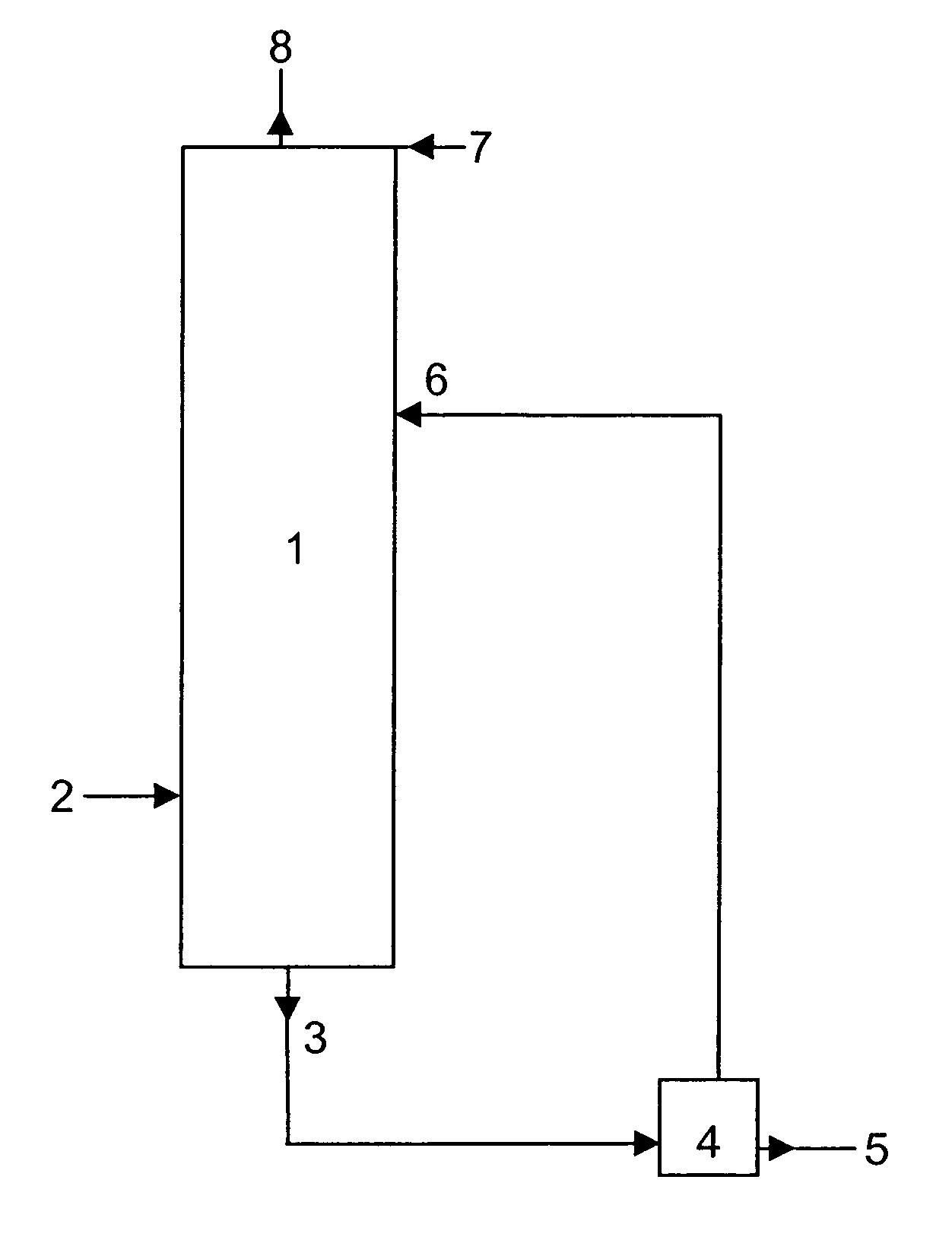Process for the separation of an aqueous mixture of trioxane and formaldehyde and corresponding applications
a technology of formaldehyde and aqueous mixture, which is applied in the field of process for the separation of an aqueous mixture of trioxane and formaldehyde and corresponding applications, can solve the problems of reducing the yield of the reaction, complicating the process, and increasing the cost of the process
- Summary
- Abstract
- Description
- Claims
- Application Information
AI Technical Summary
Benefits of technology
Problems solved by technology
Method used
Image
Examples
Embodiment Construction
[0024]One embodiment of the invention consists of reacting a concentrated formaldehyde solution in an acid medium in a reactor according to one or another of the existing processes and feeding the generated vapors to a scrubbing column. These vapors are supplied to a lower region of the column but at a certain height above the foot to obtain an appropriate exhaustion of trioxane. The purpose of the scrubbing column is to transfer mass and energy between the incoming vapor mixture (that is the aqueous mixture of trioxane and formaldehyde) and an aqueous solution of urea used as scrubbing liquid, at the same time as the formaldehyde and the urea react together chemically. To achieve this mass transfer the column is equipped with the appropriate devices normally used for such purpose, such as plates, or continuous fillers like those used in the conventional distillation columns. A concentrated urea solution and a dilute sodium hydroxide solution (or, optionally, any other strong base) ...
PUM
| Property | Measurement | Unit |
|---|---|---|
| temperature | aaaaa | aaaaa |
| temperature | aaaaa | aaaaa |
| molar ratio | aaaaa | aaaaa |
Abstract
Description
Claims
Application Information
 Login to View More
Login to View More - R&D
- Intellectual Property
- Life Sciences
- Materials
- Tech Scout
- Unparalleled Data Quality
- Higher Quality Content
- 60% Fewer Hallucinations
Browse by: Latest US Patents, China's latest patents, Technical Efficacy Thesaurus, Application Domain, Technology Topic, Popular Technical Reports.
© 2025 PatSnap. All rights reserved.Legal|Privacy policy|Modern Slavery Act Transparency Statement|Sitemap|About US| Contact US: help@patsnap.com


